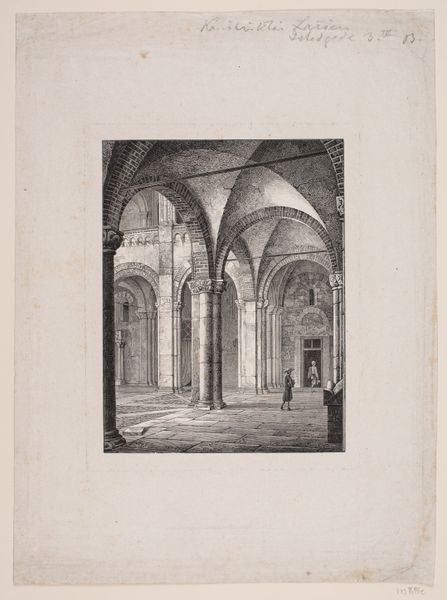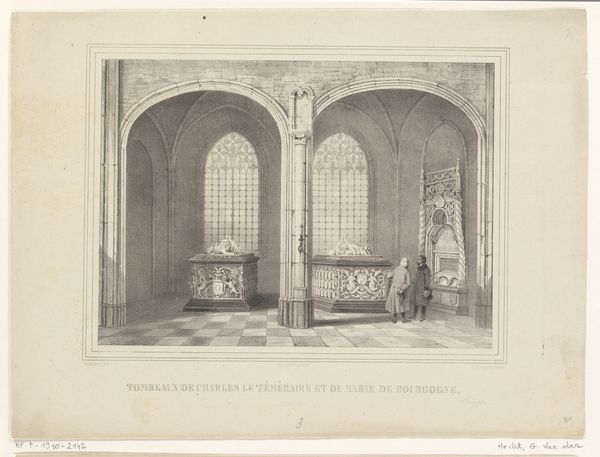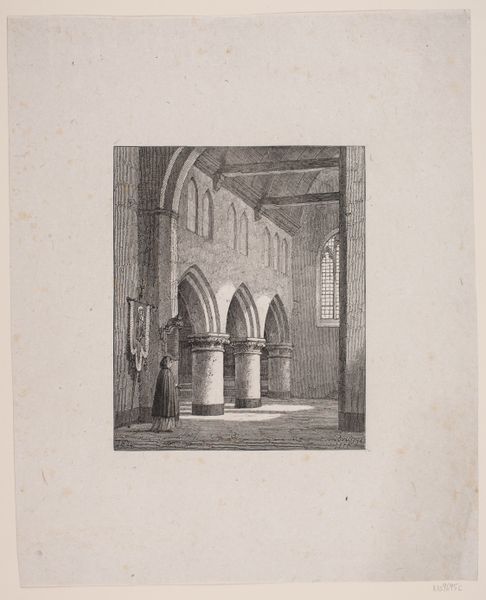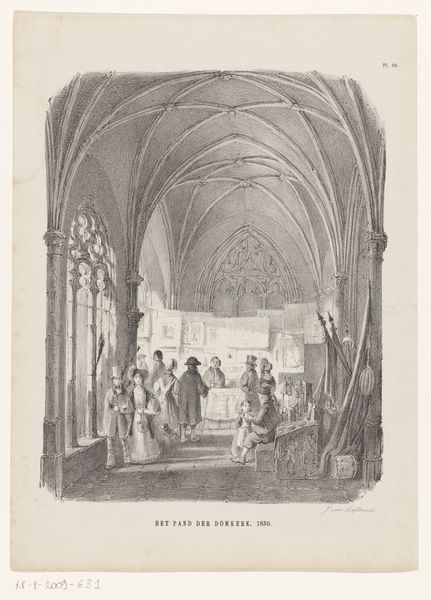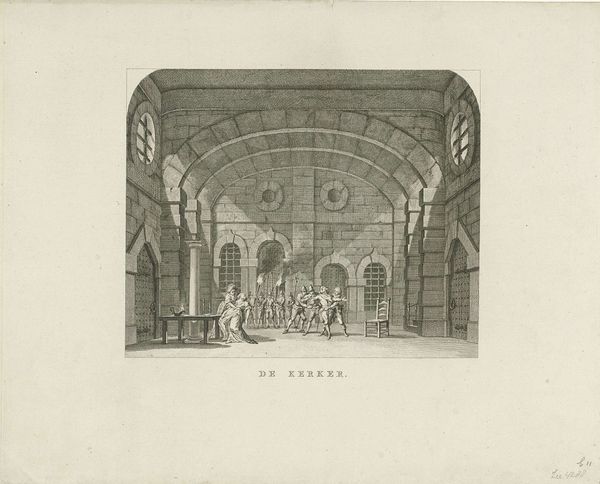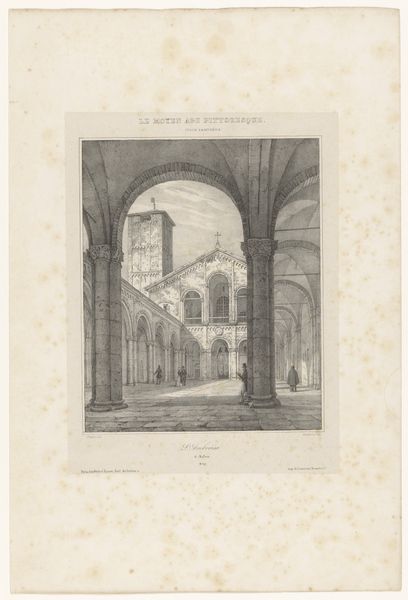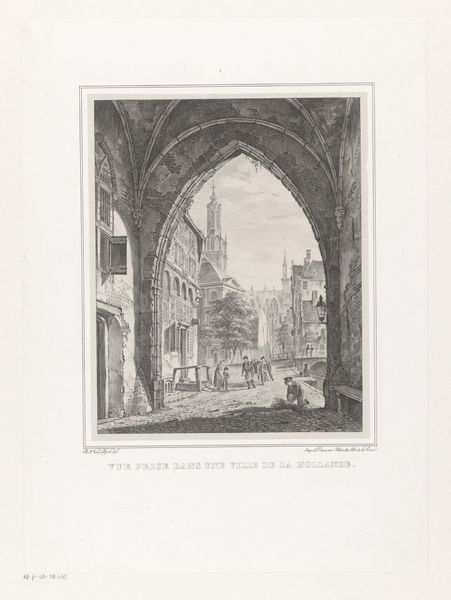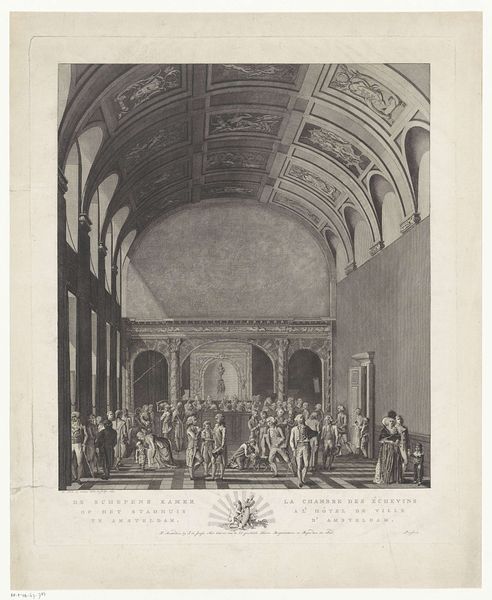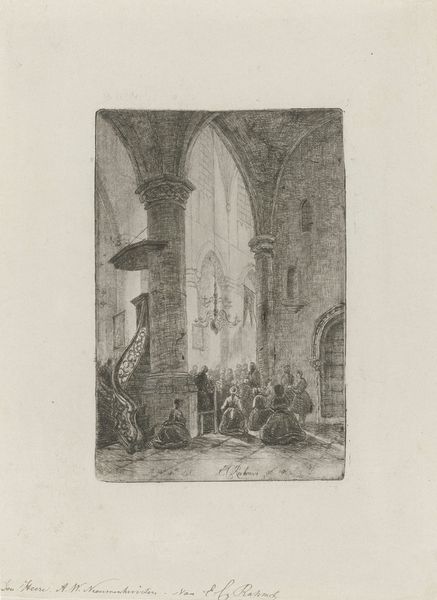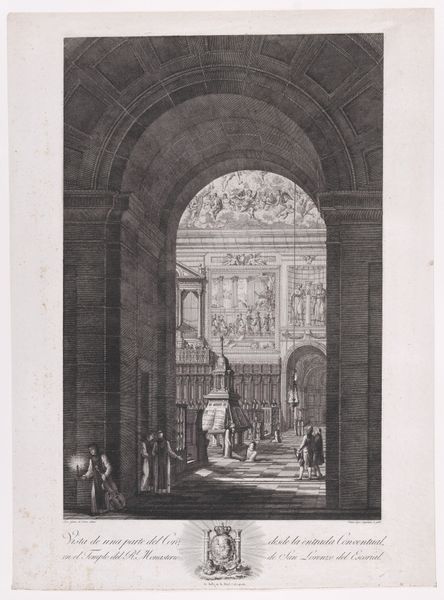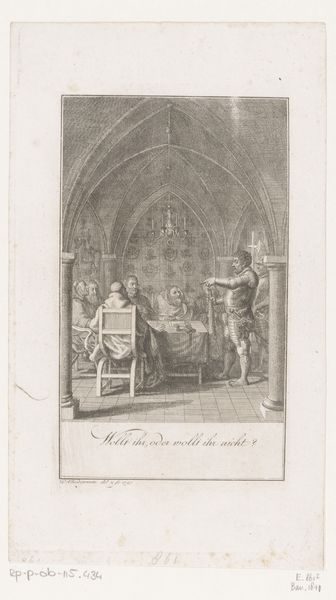
View of the Chapel of Calvary in the Church of St. Roch, Paris n.d.
0:00
0:00
drawing, lithograph, print, etching, paper, engraving
#
drawing
#
baroque
#
lithograph
# print
#
etching
#
landscape
#
paper
#
engraving
Dimensions: 293 × 222 mm (image); 481 × 325 mm (sheet)
Copyright: Public Domain
Editor: This print, "View of the Chapel of Calvary in the Church of St. Roch, Paris," is an engraving, etching and lithograph. It feels very theatrical. A lone figure kneels before this dramatically lit scene of the crucifixion. How do you interpret this work? Curator: I see this not just as a depiction of religious devotion, but as a carefully constructed performance of faith deeply embedded in its historical and social context. Think about the role of the Church, particularly in post-revolutionary France. How does this image reinforce power structures, perhaps even unintentionally? Editor: I see what you mean, with the church looming over the kneeling figure. Was this staging common at the time? Curator: Exactly. The staging reflects the Baroque aesthetic and its connection to power and display. The theatricality wasn't just artistic; it was a means of social control, of conveying messages about hierarchy and piety in a time of immense upheaval. Think about how gender and class intersect with these expressions of devotion, who is represented as closest to the divine? Editor: The figure looks like a woman, and they’re at the bottom, almost eye level with the crucifix… so the church almost feels imposing over her? Curator: Precisely. And consider who this print was made for. Was it meant for the elite, reinforcing their connection to the Church? Or was it circulated more widely, serving as a visual lesson in piety for a broader audience? Whose story is really being told here and whose is being obscured or left out? Editor: It's interesting to consider the audience and how the image functions beyond just its religious context. I initially focused on the artistic style, but you've made me think about its political dimensions. Curator: Art is never created in a vacuum. By questioning the underlying power dynamics and social conditions, we can reveal the multifaceted stories that artworks tell, stories that often extend far beyond the surface. It allows a deeper, more meaningful connection to be fostered. Editor: I hadn't thought about it in quite this way, but now I see how much richer the piece becomes when viewed through that lens. Thanks!
Comments
No comments
Be the first to comment and join the conversation on the ultimate creative platform.

